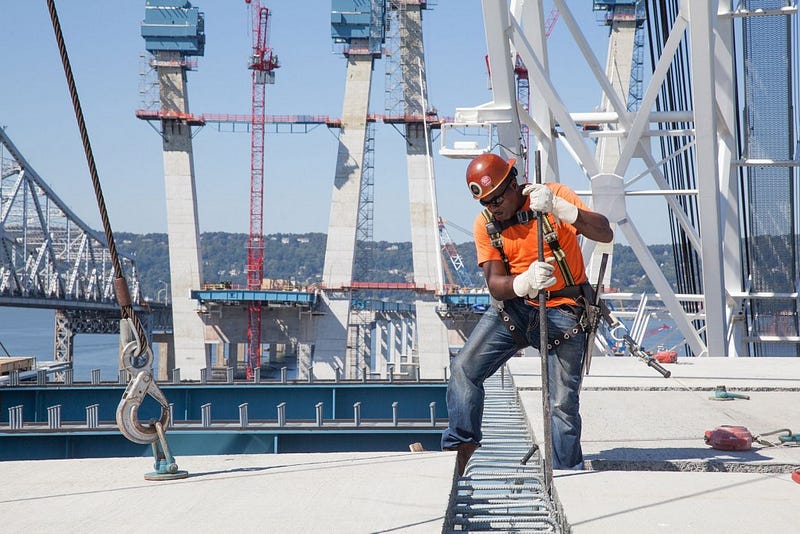Five Things That Could Derail Infrastructure, and One Thing That Will Make It Great

It’s Infrastructure Week. Washington is doing its best, against incredible odds, to focus on the public foundations that make American commerce function: its nearly 47,000 miles of Interstate highways, its dozens of commercial ports, its more than 600,000 bridges.
There have been calls for a major federal infrastructure investment for years. President Barack Obama managed to sign a temporary boost into law as part of the recovery effort in 2009. Congress managed to pass another spending plan in 2015, worth $305 billion over five years. Democratic presidential candidate Hillary Clinton proposed a $500 billion investment during her 2016 campaign. Never one to be outdone, President Donald Trump doubled her up, suggesting a $1 trillion spending plan over a decade.
He’s since mentioned his desire to pursue an infrastructure plan on the night of his election victory, on inauguration day, and during his address to a joint session of Congress.
Estimates suggest infrastructure spending, if done right, could create millions of American jobs. And polling persistently shows an infrastructure plan would be extremely popular with the public.
Still, there are a number of reasons an infrastructure bill may not get done. Here are just five of them:
1. While infrastructure is a big deal, it’s poorly defined. What would be the parameters of such a plan look like? Bridges, roads, ports, and waterways? What about funding for transit projects, like light rail, street cars, and new bus lines? Or our energy grid and broadband networks? Clean water systems?
2. While the need is overwhelming — the American Society of Civil Engineers’ grade of U.S. infrastructure is an infamous D+ — the willingness to pay isn’t. Some suggest borrowing the money. Trump wants to raise the bulk of it from the private sector. Others favor a boost in the gasoline tax. We’re talking square pegs and round holes, here. How will they reconcile their completely opposing approaches?
3. Assuming the Republican vision wins out — they control Capitol Hill and the White House, after all — what will the private sector’s role look like? Public-private partnerships aren’t new; in the absence of federal help, they’ve often been used at the state and municipal level to fund infrastructure projects. If we’re to follow this practice in Washington, safeguards are needed so we’re not paying contractors for already completed projects — or those that won’t serve the public good. Moreover, the bulk of infrastructure needs aren’t well suited to private sector investment.
4. This is a fair, albeit brief, question: Is it possible for this White House and this Congress to work together now? It may have been fair to assume they would, only a few months ago; legislative possibilities abounded. Now, we have discussions about the size and shape of a Congressional investigation into details of the Trump presidency that are wholly unrelated to infrastructure spending. Meanwhile, the Justice Department just announced its own special investigation that will, at the very least, be a distraction. Pardon the pun, but will an infrastructure plan be derailed?
5. Lastly, has infrastructure been placed too far down the priorities list? The Senate is trying to turn to healthcare reform, which could lay the ground for a tax reform effort. Plus, a budget is due later this month and will need to be passed by Oct. 1. An increase in the debt limit is necessary as well. To say it’s unclear where infrastructure stands among these priorities is an understatement.
Dismayed at any infrastructure plan’s prospects? Don’t lose all hope; despite the significant distractions, there are those on Capitol Hill who still want to see it happen. Should optimism prevail, I have one suggestion:
Make sure any and all infrastructure spending Buys American.
Buy American preferences — which give domestic manufacturers and workers the first shot at government procurement contracts — have covered federal highway and transit spending since the 1980s. They existed in the 2009 infrastructure bill, where they proved cost-effective. Senate Democrats took pains to include them in their own infrastructure proposal this year, and Trump — who still says “I want to buy American and hire American” at his rallies — has signed executive orders expanding their reach.
They enjoy broad support among voters. And they’re probably the most surefire way to create the steelmaking jobs the president has championed.
At this point, Trump desperately needs a political win. If he manages to get as far as infrastructure spending, I hope he’ll do it the right way.
***
Reposted from Medium.

